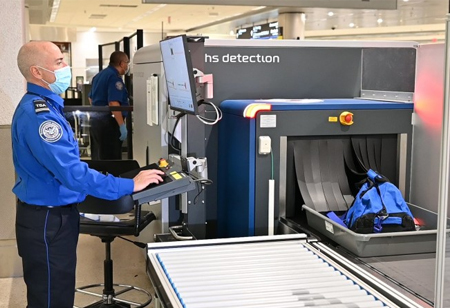THANK YOU FOR SUBSCRIBING
Be first to read the latest tech news, Industry Leader's Insights, and CIO interviews of medium and large enterprises exclusively from Gov CIO Outlook
THANK YOU FOR SUBSCRIBING

By
Government CIO Outlook | Tuesday, March 09, 2021
Stay ahead of the industry with exclusive feature stories on the top companies, expert insights and the latest news delivered straight to your inbox. Subscribe today.
Computed Tomography (CT) checkpoint scanners are being deployed in Transportation Security Administration (TSA) checkpoints at airports.
FREMONT, CA: A new Computed Tomography (CT) checkpoint scanner that offers 3-D imaging and seven credential authentication technology (CAT) units have been deployed and are in use at the Transportation Security Administration (TSA) checkpoints at the Milwaukee Mitchell International Airport. Along with offering vital explosives detection potentials, this new CT technology helps the TSA officers to decide whether an item inside a carry-on bag is a possible threat. The new scanners and the credential authentication technology units also mitigate touchpoints at the checkpoint, which benefits both officers and passengers during this global pandemic.
TSA officers at Portland Jetport and Bangor International Airport are also now leveraging the new technology that confirms the validity of a traveller's identification. Two CAT units at Portland and one at Bangor are now in operation. These security officers are looking forward to using this technology. It will improve the detection capability for identifying fraudulent passenger identification at Portland and Bangor security checkpoints. The system makes document checking more effective by confirming the passenger's flight status in near real-time.
The CT systems apply advanced algorithms to identify explosives by generating a 3-D image that can be viewed and rotated on three axes for thorough visual image analysis by a TSA officer. If a bag needs further screening, TSA officers will inspect it to ensure that a threat item is not contained inside. The 3-D imagery enables TSA officers to manipulate the image on the screen to get an improved view of a bag's contents and often clear items without having to open a carry-on bag.
For credential authentication, passengers come to the travel document checking station at the checkpoint and listen to the officer's instructions, who will tell passengers to insert their identification into the CAT scanner for authentication. Passengers will not have to give their boarding pass, thus mitigating a touchpoint. Instead, they should have their boarding pass ready if the TSA officer requests an inspection. The CAT unit will verify that the traveller is prescreened to travel out for a flight that day; however, a boarding pass may be requested for passengers under 18 or those without IDs or with damaged IDs.
I agree We use cookies on this website to enhance your user experience. By clicking any link on this page you are giving your consent for us to set cookies. More info



